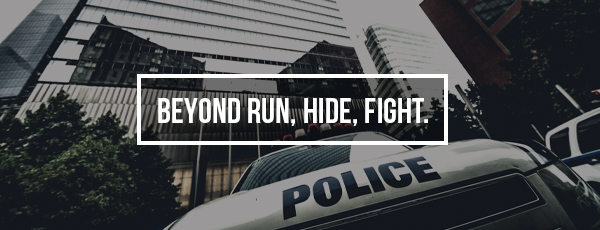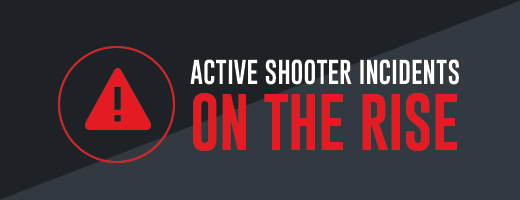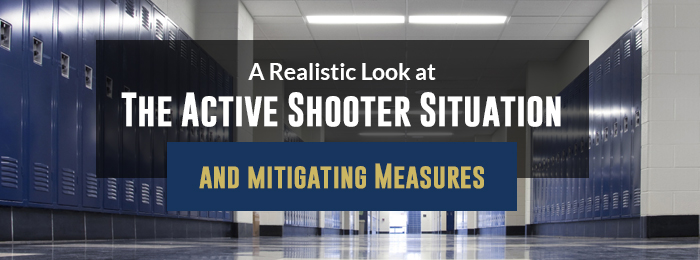Beyond Run, Hide, Fight: What 3 Recent Active Shooter Incidents Taught Us About Being Prepared

Active shooter incidents have become a new normal in our society. As of Sept 24, 2019, there had been an average of 1.24 mass shootings per day in 2019, killing 377 people and injuring another 1,347 victims.
“Run. Hide. Fight®” has been the mantra of training set down by the Department of Homeland Security. We are instructed to run and escape if possible; hide if escape is not possible, and fight as an absolute last resort. While this run, hide, fight mantra offers a lot of value to give people a course of action and to help them feel more confident and prepared in the event of an active shooter scenario, there is more to the equation when it comes to prevention and preparation. It’s time to face this fact.
Here, we look at three recent incidents that should serve to remind organizations that there is much more to consider.
Historic District in Dayton, Ohio
In the early hours of August 4, 2019, a 24-year old gunman with an AR-15-style assault rifle and 250 rounds of ammunition killed nine people and injured another 27 in the Oregon Historic District of Dayton, Ohio. The perpetrator was killed by police within 32 seconds of the first shots. A search of the shooter’s home uncovered evidence of his obsession with violence and that he had expressed a desire to commit a mass shooting.
The organization Childhood Preparedness, which provides resources for early childhood professionals with emergency preparedness planning, response, and recovery, formed the following takeaways from both the Dayton shooting and the El Paso shooting, which happened in the same weekend.
Lessons Learned:
Active Threat Training Saved Lives: Dayton law enforcement agencies received previous training in active shooter response, and their quick action saved countless lives.
Citizen Training Is Important: The key to citizen survival in both the Dayton event and other mass shootings was to quickly identify the sound of gunshots.
Running Is Always an Option: In this situation, running was, in fact, a good idea. Running from the gunfire to a safe location away from the shooter helped save some lives. However, some individuals froze and needed to be prompted by others to run. Individuals who chose to lay on the floor suffered multiple injuries and were trampled by others running from the area.
Stop The Bleed Training Can Help: Participants at the scene aided first responders by treating the wounded with basic first aid, CPR, and even applying tourniquets, such as belts, to the wounded. Tourniquet use is a crucial element of Stop The Bleed Training, which teaches bystanders how to stop severe bleeding before professional medical help arrives on the scene.
Townville Elementary School
On September 28, 2016, in a small town 40 miles outside of Greenville, South Carolina, a fourteen-year-old opened fire at Townville Elementary School playground, shooting three students and a teacher. One of the students, a six-year-old boy, later died, as did the shooter’s father, who had been killed earlier in the day by his son. The suspect was apprehended by a volunteer firefighter after his gun jammed on the playground, just 12 seconds after he first pulled the trigger.
Dr. Joanne Avery, Superintendent of the district, candidly shared her experiences in dealing with the immediate response to the shooting and its aftermath, in a School Safety Webinar sponsored by Raptor entitled, Lessons Learned and Changes We Made After an Active Shooting.
Lessons Learned:
Quick Response is Crucial: The majority of active shooter events, 69%, end in five minutes or less and 67% are over before the first police arrive. “Speedily moving towards engagement with the shooter should be the primary guideline when teaching active shooter response tactics,” according to the FBI’s report, A Study of Active Shooter Incidents in the US Between 2000 and 2013.
Shooters Do Their Research: Active shooters study and learn from past events in order to inflict the largest amount of damage. “They want their events to be deadlier” and that “they’re on the clock…so they try to get as much damage done as quickly as they can.”
Rural Areas Are Not Immune: The majority of school shootings have occurred in semi-rural and rural areas, which means it can take between 12 and 15 minutes for first responders to arrive. Dr. Avery says this is one of the reasons her school was chosen by the shooter.
Create a Drill Calendar: Have regular active shooter response training with employees and (in the case of schools) students. Create different types of scenarios (e.g., lockdowns, times of day, types of weapons used, outside vs inside).
Know How to Lock Down: You need to be able to have things in place to inform people within the building about the shooter’s whereabouts and a clear evacuation plan. In some situations, training on how to confront the shooter may be warranted.
Dr. Avery stresses that “the first action that anybody should make if they see an active shooter on campus is…to shout ‘lockdown’, call the front office, and then call 911.”
Las Vegas Country Music Festival
On October 1, 2017, between 10:05 and 10:15 p.m., a shooter opened fire from his suite on the 32nd floor of the Mandalay Bay Hotel on a crowd of 22,000 concertgoers at an outdoor music festival. Firing more than 1,100 rounds of ammunition, he killed 58 people and wounded 422; a total of 851 people were injured during the panic that ensued. The shooter, a 64-year-old man, was found dead in his room from a self-inflicted gunshot wound. His motive remains officially undetermined.
In July 2019, the Las Vegas Metropolitan Police Department released a comprehensive After Action Review report about the event, which included a set of 93 recommendations to prepare for the future.
Lessons Learned:
Plan Ahead with Partners: Work with local government and community organizations, including neighboring police, fire, hospital, and coroner officials, to be better prepared and have a more coordinated response.
Become Less of a Target: Responding officers should remove reflective vests so that they are less of a target to shooters.
Have Trauma Kits On-Hand: For large scale events, have more trauma kits on hand available to paramedics and other responders.
Secure High-Rise Buildings: Secure high-rise buildings that oversee open-air crowds and train more officers to stop a shooter in an elevated position.
If we’ve learned one thing from these devastating incidents, it’s that preparation is key. Whether it’s understanding the sounds of gunfire, having trauma kits on hand, or even being prepared to attack and take down a gunman, these actions save lives. Acting quickly and decisively means all the difference.
Every active shooter scenario will be different, but the point is that organizations must have some level of preparedness for each phase of a shooting event – before, during, and after. Those strategies should include:
- reducing the likelihood of a workplace shooting through comprehensive risk mitigation (e.g., threat assessments, training, physical security);
- having response plans in place in the event of an active shooter scenario (e.g., evacuation routes, communication with law enforcement); and
- managing the aftermath of an event (e.g., employee support, public communications).
Once in place, plans must be continually updated, drills practiced, and changes communicated regularly.
Keeping your employees, customers and other stakeholders safe and your business protected is a 24/7/365 endeavor. To learn more, download our latest whitepaper, “Coming to Grips with the Known-Known of Active Shooter Incidents.”


